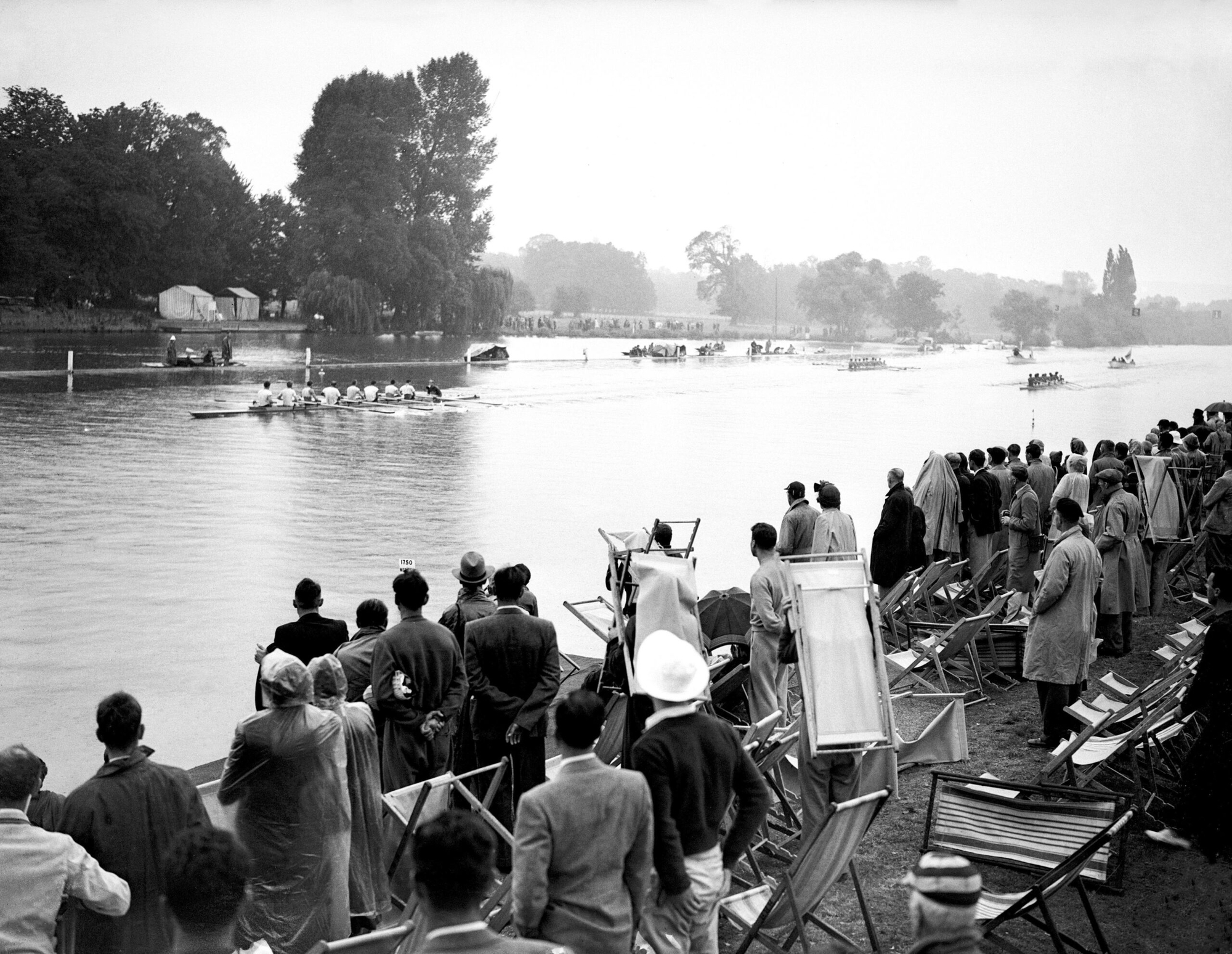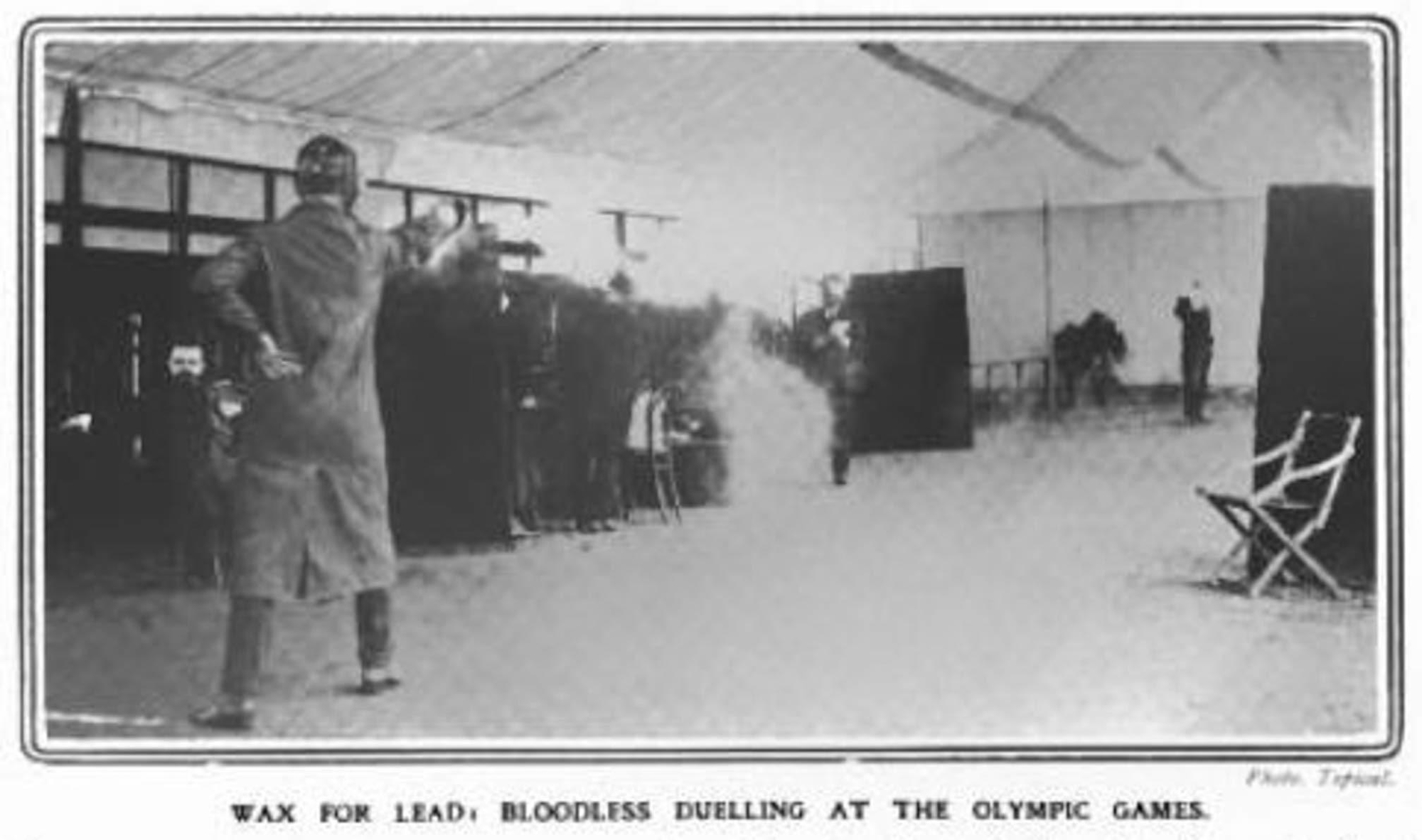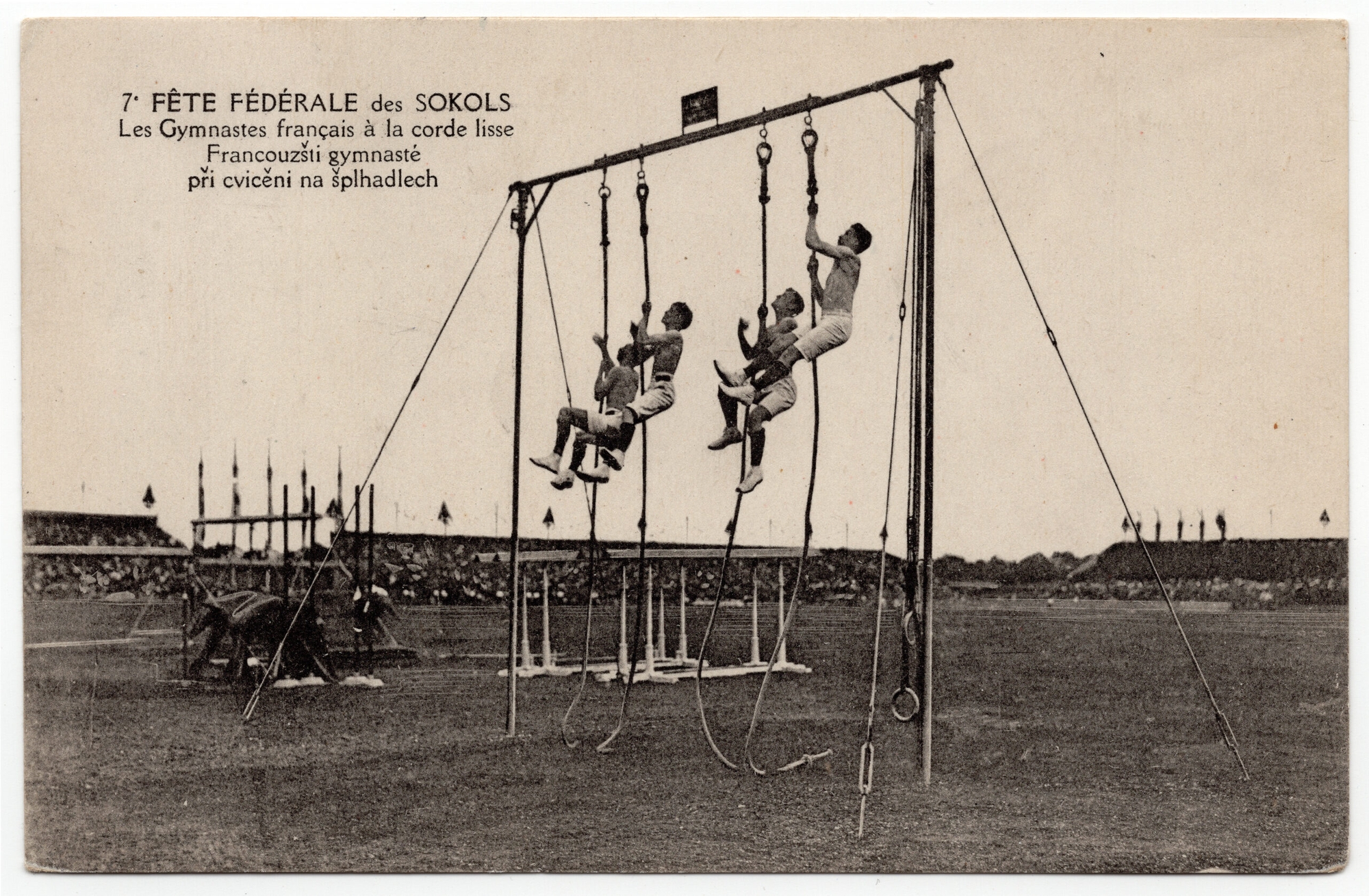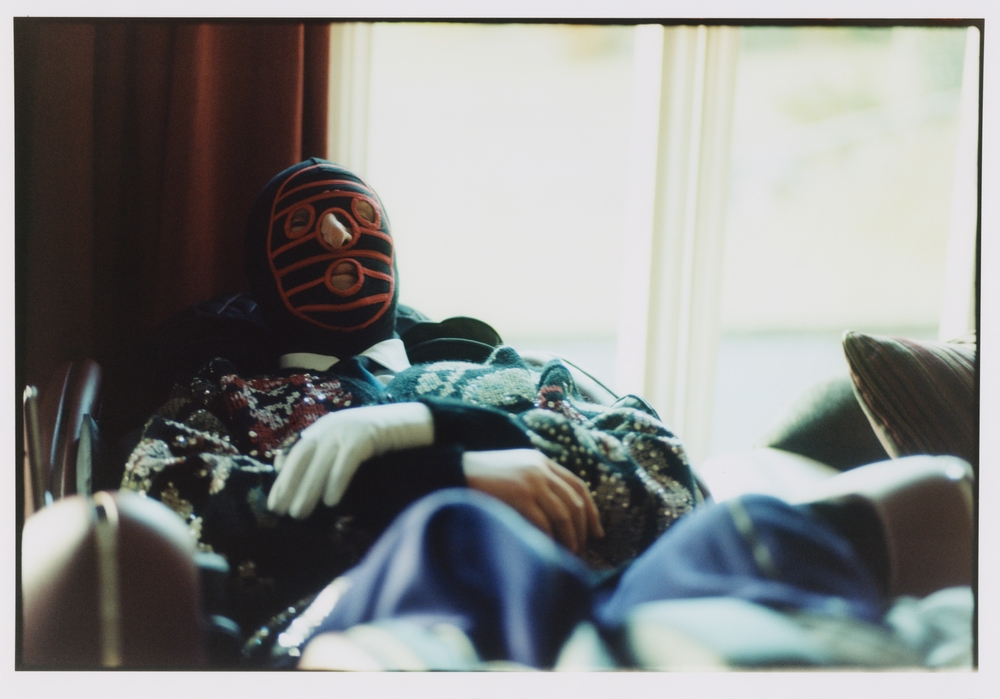
London Olympic Games 1948 – Rowing – Henley

Pistol duelling as an associate event at the 1908 London Olympic Games.

French gymnasts climbing up the rope during the 7th Sokol international mass gymnastics festival in Prague, Czechoslovakia, in June 1920.

English Policemen vs Sweden in tug-of-war at the olympics in Stockholm 1912.
Think of the Olympics, and you think of the 100m sprint, or the cycling, or perhaps even the equine ridiculousness of dressage. But throughout the Games’ 128-year history (under the International Olympic Committee) there have been plenty of strange and alluring discontinued events. Boules and ballooning at the 1900 Olympics in Paris. La canne in 1924. Between 1912 and 1948, there were famously a number of artistic competitions, including architecture, painting, and sculpture. Here, CircleZeroEight takes a closer look at four of the weirdest past events.

London Olympic Games 1948 – Rowing – Henley
Canoe Marathon
Despite its name, the canoe marathon was not a full 26 mi 385 yd, but rather a much more manageable 10,000 metres. The event was part of the Olympic program from 1936 in Berlin to the 1956 Games in Melbourne (although there were canoe marathon demonstrations at the 1924 Olympics in Paris), and were contested in both singles and doubles – for men only.
The extreme test of endurance and skill was won the most times by Sweden, with Gert Frederiksson the most successful athlete, winning two golds in 1948 and 1956.

Pistol duelling as an associate event at the 1908 London Olympic Games.
Pistol Duelling
The 1908 Olympics took place in London, predominantly in the newly built White City Stadium (now a series of offices just north of Westfield Shepherd’s Bush) over, bizarrely, the course of six months and four days. Of all the unusual events that took place during its 187 days (glima, jeu de Paume, or running deer shooting, anyone?) pistol duelling might just be the strangest.
The event was exactly as you’d imagine: two heavily protected competitors fired wax bullets at each other, on the referee’s signal, from distances of 18 to 23 metres. Although it was only an exhibition event – and as such no medals were given out – eleven different competitors from America, France, Russia, and Sweden took part. Each wore large trench coats, and the wax bullets disintegrated on impact – a result not too dissimilar to the primary coloured splatters of modern day paintball.

French gymnasts climbing up the rope during the 7th Sokol international mass gymnastics festival in Prague, Czechoslovakia, in June 1920.
Rope Climbing
Rope climbing has featured four times in the Olympics – in 1896, 1904, 1924, and 1932 – and featured competitors racing to the top of a 25 ft rope (or a whopping 45 ft in 1896) in a brutal test of upper body and core strength.
Incredibly, in the 1904 games, held in St. Louis, the gold was won by a man called George Eyser, who ascended the rope in a cool seven seconds. What made this an all the more remarkable feat is that it was one of six medals he won that day, with gold in parallel bars and the long horse vault, silver medals in pommel horse and 4-event all-around, and a single bronze in the horizontal bar. The best bit? Eyser competed with a prosthetic wooden limb, having lost his left leg after being run over by a train. Fair play.

English Policemen vs Sweden in tug-of-war at the olympics in Stockholm 1912.
Tug of War
Lasting in every single Olympics from Paris 1900 up to Antwerp 1920, the tug of war was initially contested by groups of competitors called “clubs” – which meant that, theoretically, a single country could enter multiple clubs. This was the case in London 1908, when Great Britain won all three medals: the City of London Police taking gold, Liverpool Police taking silver, and the Metropolitan Police “K” Division coming away with the bronze.
The event itself was fairly self-explanatory: teams of eight members (although six in 1900 and five in 1904) competed to pull the other team six feet from the start. If after five minutes no team had achieved this, the team who had pulled the other the furthest distance was crowned the winner.






